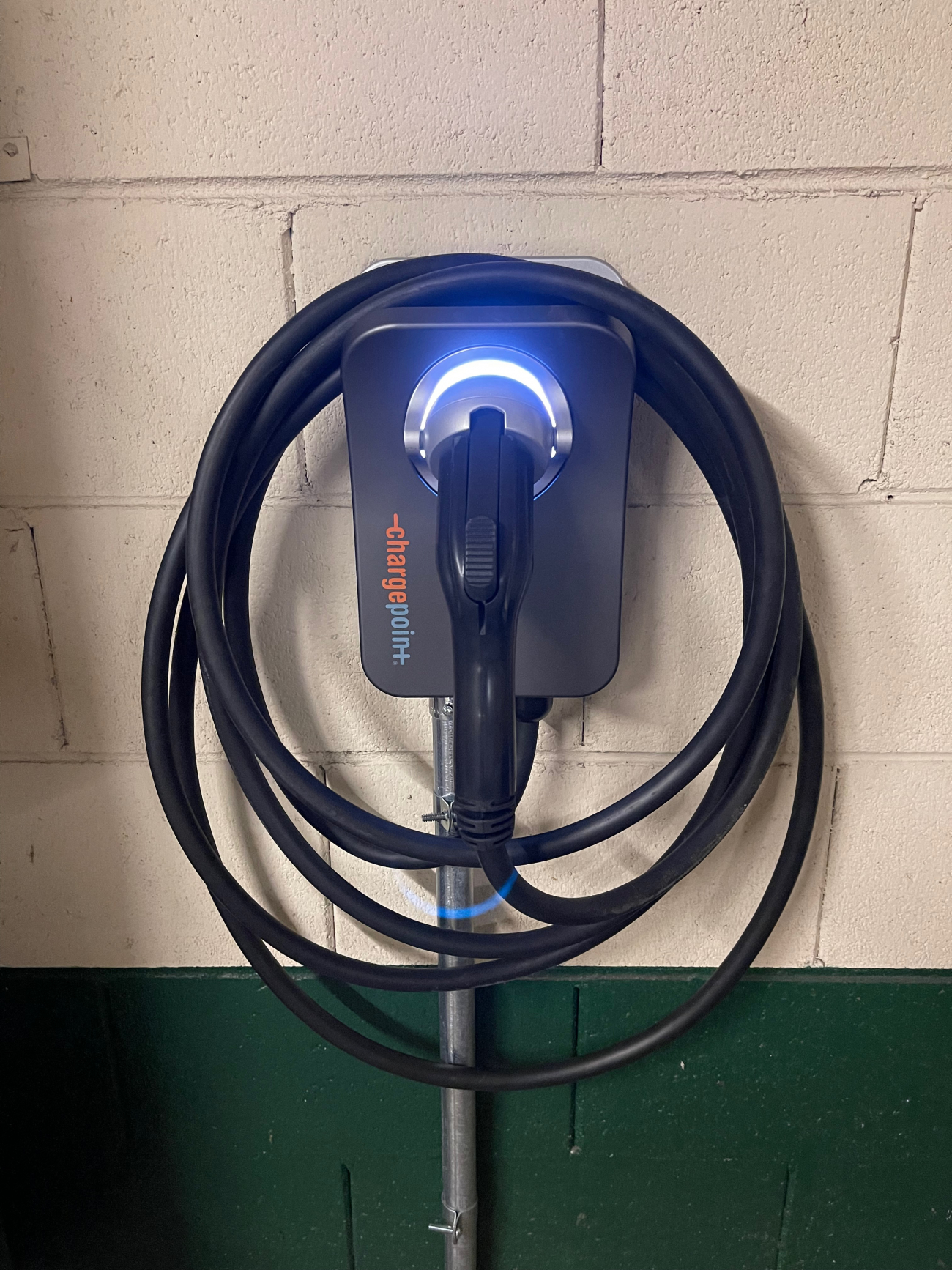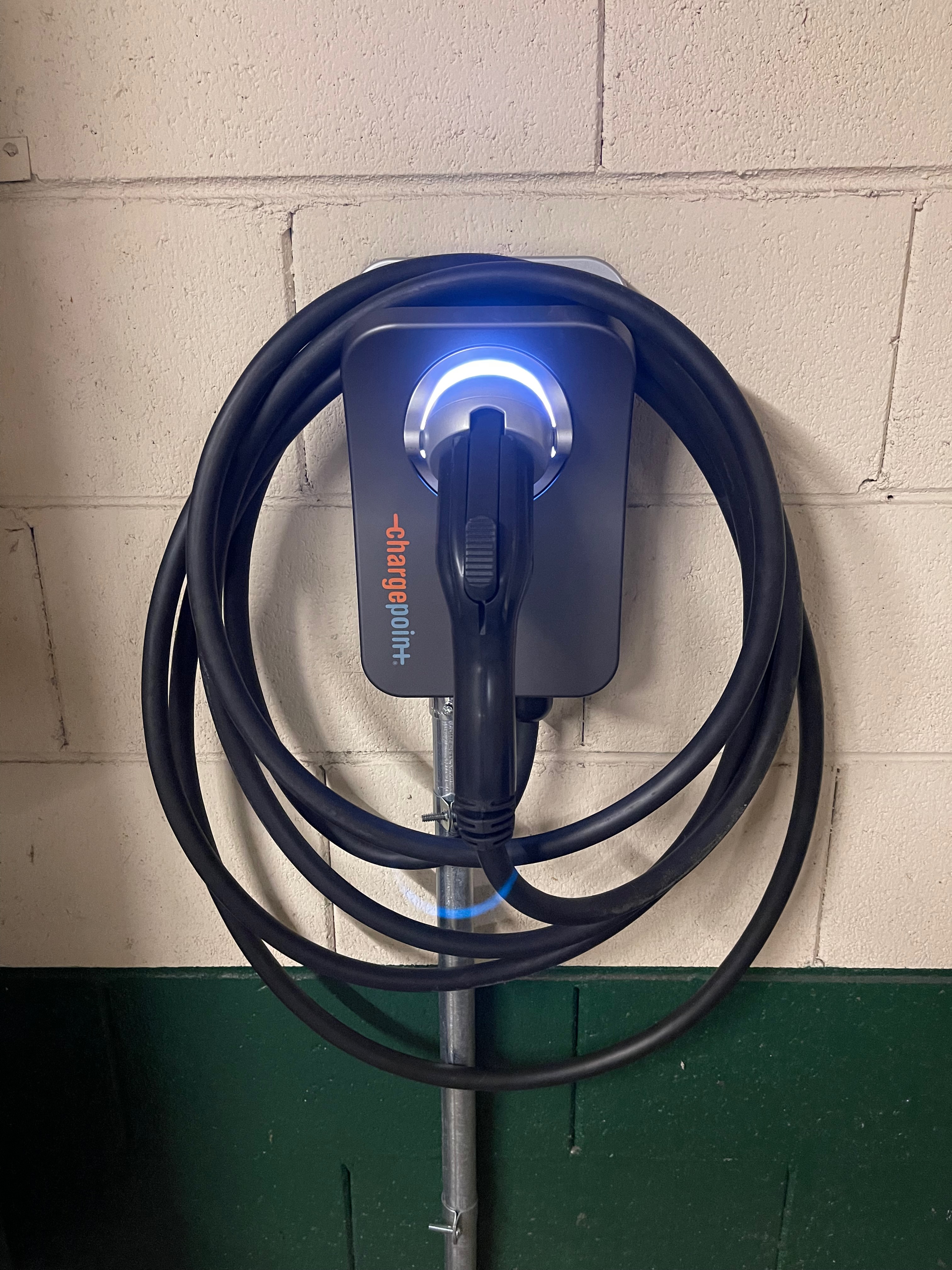EVs need electricity to drive and thrive. You plug them in to charge the battery – EVs mostly run-on lithium-ion batteries as they are particularly good at storing energy. Charging your car basically works the same as charging your smartphone or laptop for wireless use. (Yes, smartphones and laptops use lithium-ion batteries too.)
There are three levels of charging: Level 1, Level 2, and Level 3. The higher the number, the faster your car gets charged up and is ready to rumble.
Level 1: 120-VoltEvery EV comes with a cord set. It works just like any other electrical appliance: just plug one end into a normal 120-volt AC (alternating current) wall outlet, and the other (called the connector) into the car’s charge port. At level 1, every hour of electricity input gives you 3 to 5 miles of driving range. This charging speed may be fine for hybrids as they have smaller batteries to fill. For most BEVs, however, this charging speed is pretty slow. Some call it trickle charging.
Level 1 connectors: J1772 (also called: J plug), Tesla
Level 2: 208- to 240-VoltAt 12 to 80 miles* for every hour you’re plugged in, level 2 charging is a must for most EV drivers. You can’t use any old wall socket though – you’ll need to have a 240-Volt wall box installed by a qualified electrician. Many EV owners have a Level 2 charging unit installed at home, in the garage or driveway, for hassle-free overnight charging. Besides, more and more employers provide their employees with the hardware to charge their cars while at work. You’ll also find public Level 2 charging points at many locations, from malls to train stations and even courthouses.
Level 2 connectors: J1772, Tesla
Level 3: 400- to 900-VoltThe fastest way to charge your car is at a public DC Fast Charge / Tesla Supercharger point. If you find yourself running low on battery power while out and about, a top-up at a direct-current (DC) fast-charging station can be a lifesaver. A 20-minute pit stop at one of these will easily give you another 60 to 80 miles of driving. It’s not the most budget-conscious option though: topping up at a DC Fast Charge point can be two to three times more expensive than charging at your Level 2 Home Charging Unit.
Level 3 charging units are not available for private homes – they’re run by private networks, where you’ll need an account. A smartphone app will give you instant access.
Level 3 connectors: CCS (combined charging system, also called combo-plug), CHAdeMO, Tesla
Dynamic load management (DLM)Charging an EV (or two) can sap electricity away from other appliances in use at your home. Dynamic load management (also called dynamic load balancing or DLB) will make sure the available electricity for your home is balanced between your car and appliances, preventing circuit overload and blown fuses. At EVCharge4U, our favorite Load Balancing solution for single homes, apartment buildings and Home Owner Association buildings (HOA’s) is the Demand Charge Controller (DCC). Read more about Load Management solutions
here.
* The exact charging speed depends on the power output of your charger and your vehicle’s max charge rate.





